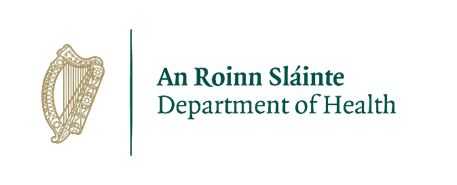Press Release: Friday 13 December 2024
Monthly waiting list figures – November 2024
The latest hospital waiting list figures for November published today by the National Treatment Purchase Fund (NTPF) demonstrate the progress achieved through the multi-annual action plan approach to address long wait times for care. The latest hospital activity report, published by the Health Service Executive (HSE), shows increased levels of hospital activity in the delivery of scheduled and unscheduled care services.
The figures show positive progress achieved in terms of those patients waiting longest. There has been a c.14% reduction in the total number of patients waiting over 12 months since this time last year, and a corresponding reduction of c.24% in the number waiting over 18 months.
Improvements in terms of the length of time patients are waiting can also be seen in the progress achieved towards the Sláintecare targets. Since the pandemic peaks, there has been a c. 29% reduction in the number of people waiting longer than the Sláintecare targets, equating to almost 180,000 people.
Continuing improvements in the Outpatient Department (OPD) waiting list have contributed to an overall reduction in the total outpatient waiting list for the third month in a row. At the end of November, there were 685,518 people on the total acute hospital waiting lists, which represents a slight decrease in comparison with this time last year.
Our acute hospitals are delivering higher levels of activity and treating many more patients. The latest hospital rolling 12-month activity report published by the HSE gives insight into acute activity levels, with millions of patients being seen and treated annually within our hospital service. The report outlines that there was c. 3.8 million OPD, and c. 1.9 million Inpatient and Daycase (IPDC) attendances during the period covered by the report. In comparison with the levels of activity delivered in the full year 2022, these figures represent increases of c. 11% for both OPD and IPDC activity.
In addition to this planned care, our hospital system also treated c. 1.8 million patients during this same period in emergency care, which represents a c. 8% increase on the full year 2022 and reflects the continuing demands on our hospitals. Despite the many challenges, our hospitals have delivered improvements which are making a real difference to patients.
Many individual hospitals have implemented measures to deliver impressive reductions in both their waiting lists and waiting times in the year to date to the end of October.
For example, in Tallaght University Hospital, the OPD neurology waiting list has been reduced by 19% since the beginning of the year, with an additional 920 patients being seen. This was achieved by increasing capacity through additional WTEs, long waiter clinics, and OPD appointments.
In St. James’s Hospital, the IPDC general surgery waiting list has been reduced by 37%, and an additional 161 patients have been seen this year. This was achieved by increasing capacity through the use of additional weekend surgery sessions and weekend minor operation day surgery sessions to enhance access.
In Mercy University Hospital, through additional endoscopy surveillance sessions, the GI Scope gastro-enterology waiting list has been reduced by 26%, and an additional 316 patients have been seen this year.
While we have seen improvements in waiting times and in the level of activity being delivered, increased demand and higher than anticipated levels of additions to waiting lists have resulted in the volume of patients waiting across lists remaining too high.
There have been 1.704m additions to acute hospital waiting lists in 2024 to the end of November, and 1.690m removals in the same period. Whilst having an impact on the volume of people on our waiting lists, growth in the number of referrals to our hospital system has a positive aspect as it is indicative of people accessing the services that they need, an increased awareness of services as well as expansion of services.
The Department is engaging with the HSE and NTPF to develop the WLAP for 2025 to ensure that we can continue to build on the positive progress achieved in recent years through the WLAP approach.


